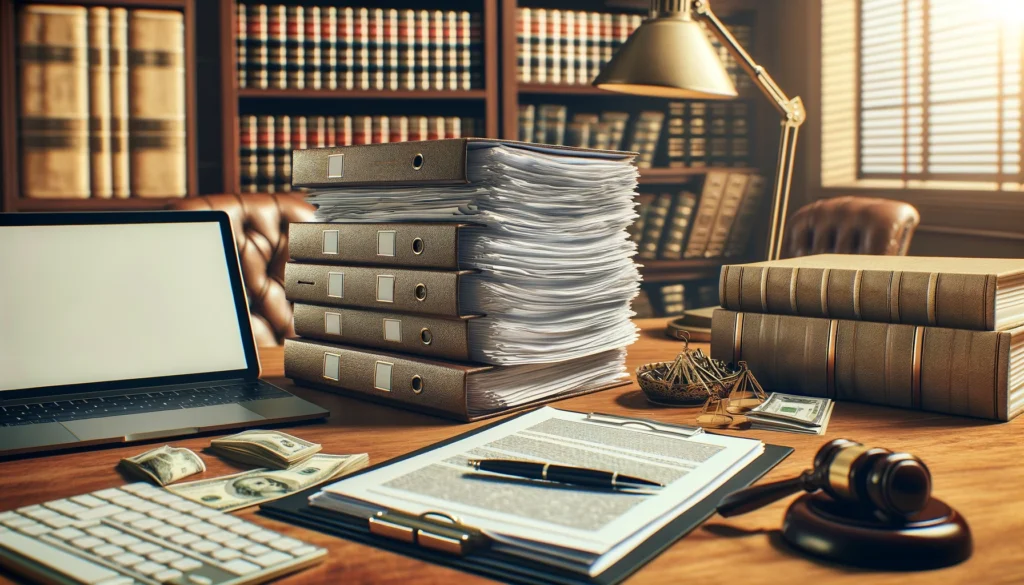
Setting the Stage for Innovation: The Role of Advanced Language Models
The landscape of personal injury cases has become increasingly intricate, demanding a heightened level of precision and sophistication in case presentation. As legal professionals navigate this complexity, language models such as ChatGPT have emerged as invaluable allies. These advanced tools not only enhance efficiency but also empower paralegals to achieve higher quality in their work. This article aims to explore the innovative use of ChatGPT in personal injury case presentations, highlighting practical techniques to harness its full potential.
Fundamentals First: Understanding ChatGPT and LLMs
Before diving into application techniques, it’s essential to grasp the basics of language models. Large Language Models (LLMs) like ChatGPT employ massive datasets to generate human-like text responses. By analyzing patterns in language, these models predict and produce contextually relevant outcomes.
ChatGPT, specifically, works by using a sequence of tokens—words or subwords—to understand and generate text. Its functionality is rooted in transformer architecture, which enables it to handle tasks with nuanced complexity. For paralegals, this translates into practical benefits including streamlined document drafting, efficient legal research, and enhanced communication.
Also read:
The Blueprint: Designing Effective Prompts for Your Case
Maximally leveraging ChatGPT begins with constructing well-designed prompts. The distinction between specific and general prompts significantly impacts the model’s output. Specific prompts guide ChatGPT toward desired results, while general prompts may yield broad and less useful responses.
Example of Specific Prompts:
– “Summarize the liability arguments in a personal injury case involving a slip and fall at a commercial property.”
– “Draft an opening argument focusing on negligence in a car accident where the client was rear-ended.”
Example of General Prompts:
– “Describe legal arguments in personal injury cases.”
– “Write about car accidents.”
To refine prompts iteratively:
1. Start with a broad query: “Explain the steps to prove negligence in personal injury.”
2. Narrow it down: “Detail the required elements of negligence in a slip and fall case.”
3. Fine-tune for depth: “Provide case law examples illustrating liability in commercial property accidents.”
Also read:
Data Organization: Streamlining Information with ChatGPT
Organizing case elements effectively is pivotal. ChatGPT aids in categorizing and summarizing intricate details, including complex medical terminology.
Categorizing Case Elements:
1. Fact Summary: Use ChatGPT to outline a full chronology of events.
2. Medical Records: Generate concise summaries of medical diagnoses, treatments, and prognoses.
3. Legal Precedents: Extract and compare relevant case law efficiently.
For example, directing ChatGPT with prompts like, “Summarize the medical diagnosis of a client who suffered a traumatic brain injury,” can simplify complex medical jargon, making it easier for legal professionals to comprehend and utilize.
Additionally, automating document management and retrieval is feasible by setting up structured queries that prompt ChatGPT to locate and extract pertinent information from vast datasets.
Also read:
The Art of Argumentation: Enhancing Legal Writing
Clear and compelling legal writing is the cornerstone of effective advocacy. ChatGPT can aid by drafting well-structured arguments and refining language for persuasive impact.
When prompting ChatGPT:
– “Draft a compelling argument highlighting contributory negligence in a pedestrian accident case.”
– “Rewrite the following paragraph to minimize passive voice and enhance clarity.”
Improving persuasive writing entails:
– Precision: Ensure prompts direct ChatGPT to focus on legal standards and factual evidence.
– Clarity: Commands that simplify complex arguments aid in creating clear, persuasive narratives.
– Redundancy Reduction: Ask ChatGPT to revise documents to eliminate repetitive information, ensuring concise delivery.
Also read:
Consultation Clarified: Supporting Client Communications
Effective client communication is foundational. ChatGPT can assist by preparing for initial consultations and generating clear, comprehensible client letters.
For Initial Consultations:
– Preparation: “Outline key questions to ask a new client in a personal injury consultation.”
– Documentation: “Create a checklist of documents to gather for a personal injury case.”
Readable Client Letters:
– Initial Outreach: “Compose a letter explaining the next steps in the personal injury process to a client.”
– Follow-Up: “Draft a letter summarizing case progress to date and upcoming actions.”
Also read:
Pitfalls to Avoid: Ethical and Practical Considerations
While AI offers numerous advantages, ethical constraints and practical challenges must be acknowledged.
Ethical Use of AI:
1. Confidentiality: Ensure prompts exclude sensitive or identifying client information.
2. Accuracy: Regularly cross-check AI-generated data for legal veracity.
Common Mistakes and Solutions:
– Overreliance: Balance AI use with human oversight to catch nuances that models may miss.
– Cultural Sensitivity: Consider the socio-economic variables that could affect personal injury cases.
Maintaining a Human Touch:
– Tailored Communication: Use AI as a tool, not a replacement, for personal engagement and empathy in client interactions.
Also read:
Future-Proofing: Staying Ahead with Continuous Learning
To stay at the forefront, continual learning and adaptation are crucial.
Resources for AI Developments:
– Webinars and Workshops: Participate in legal tech seminars.
– Publications and Journals: Subscribe to tech-focused legal publications for updates.
Encouraging a culture of continuous improvement ensures your legal team remains adept at leveraging evolving AI capabilities.
Also read:
Conclusion: Embracing AI for Elevated Efficiency
In summary, integrating ChatGPT into personal injury case management enhances precision, efficiency, and comprehension. By encouraging paralegal teams to experiment with and innovate their use of AI, legal practices can achieve new heights of proficiency. Embracing these tools not only modernizes workflows but also ensures that legal professionals remain competitive and effective in their advocacy.


